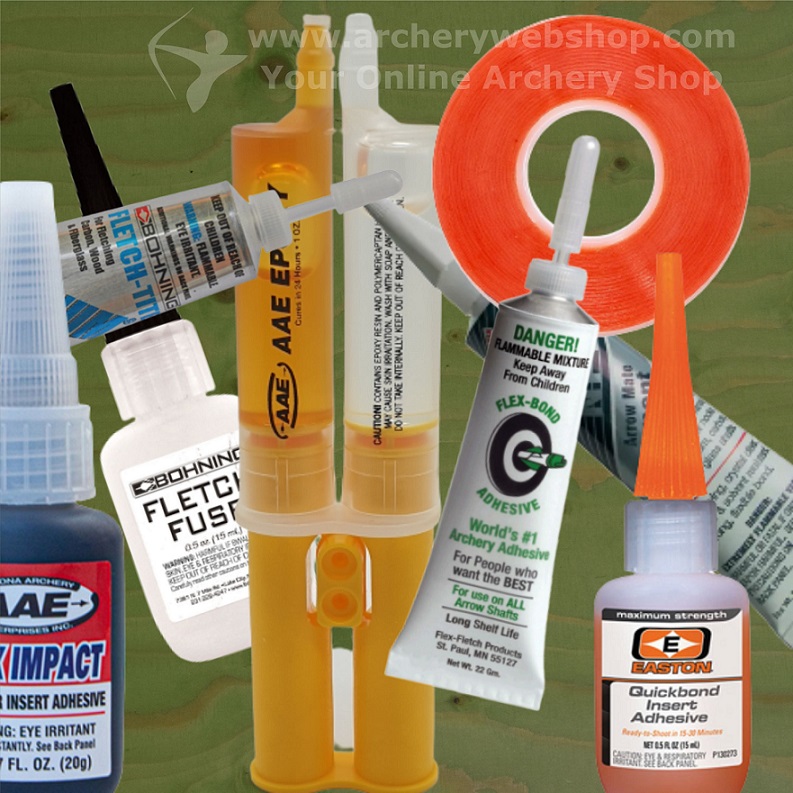
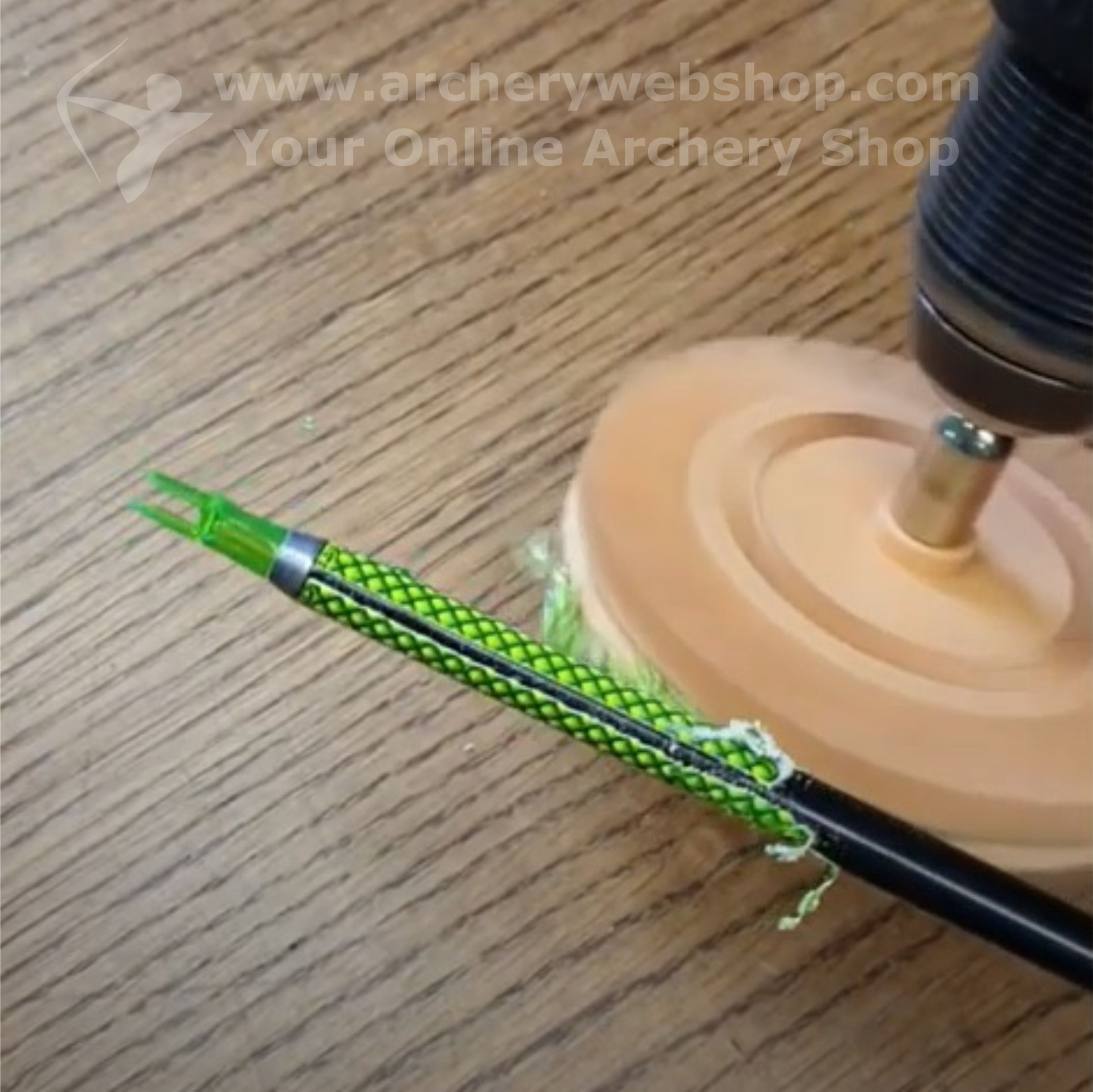
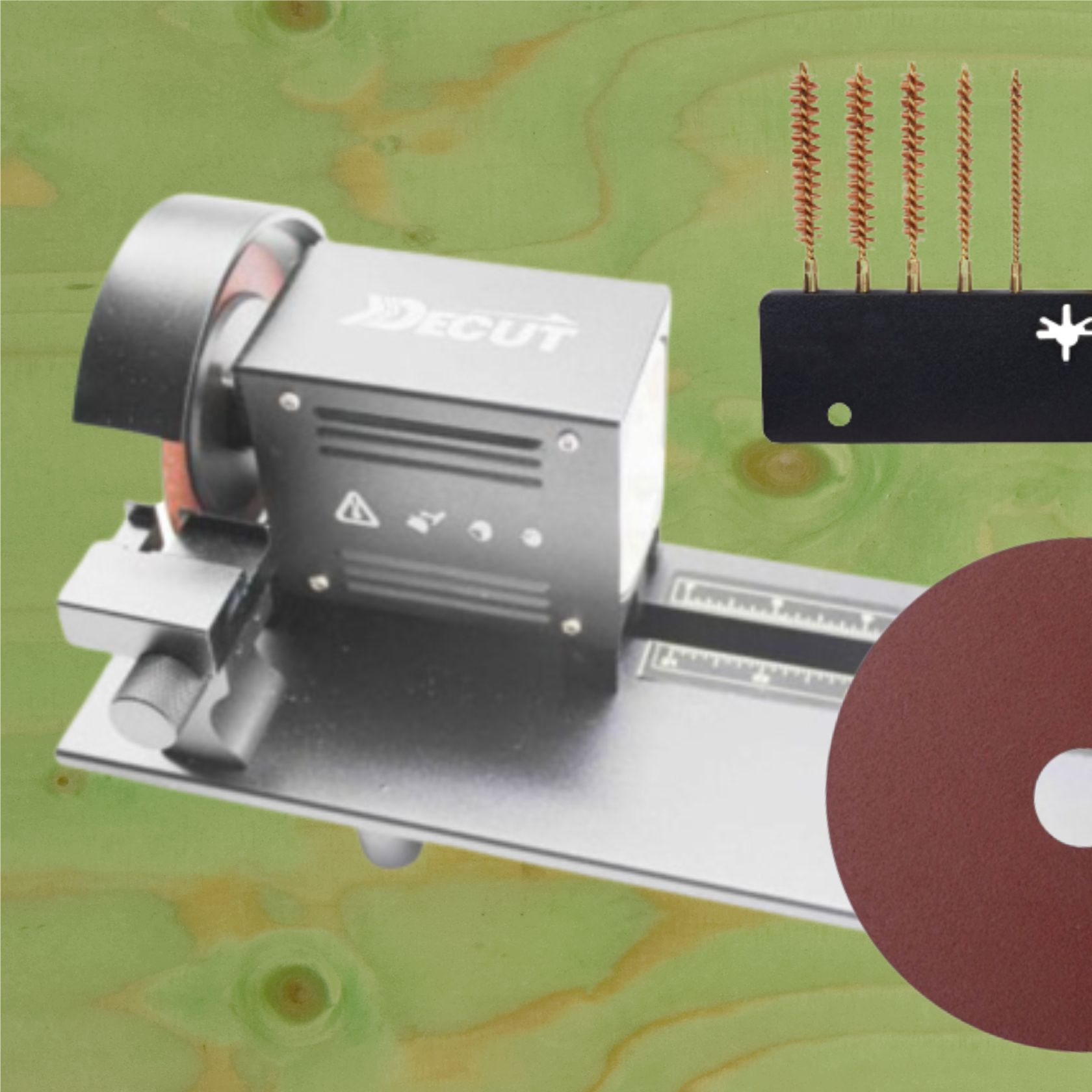
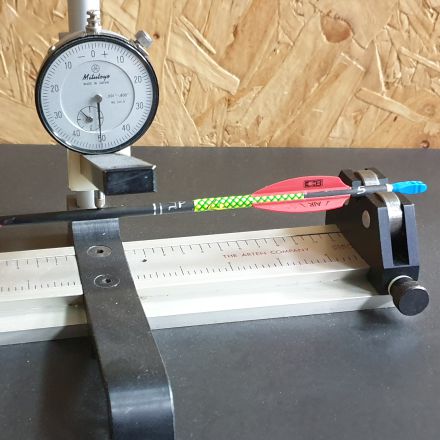
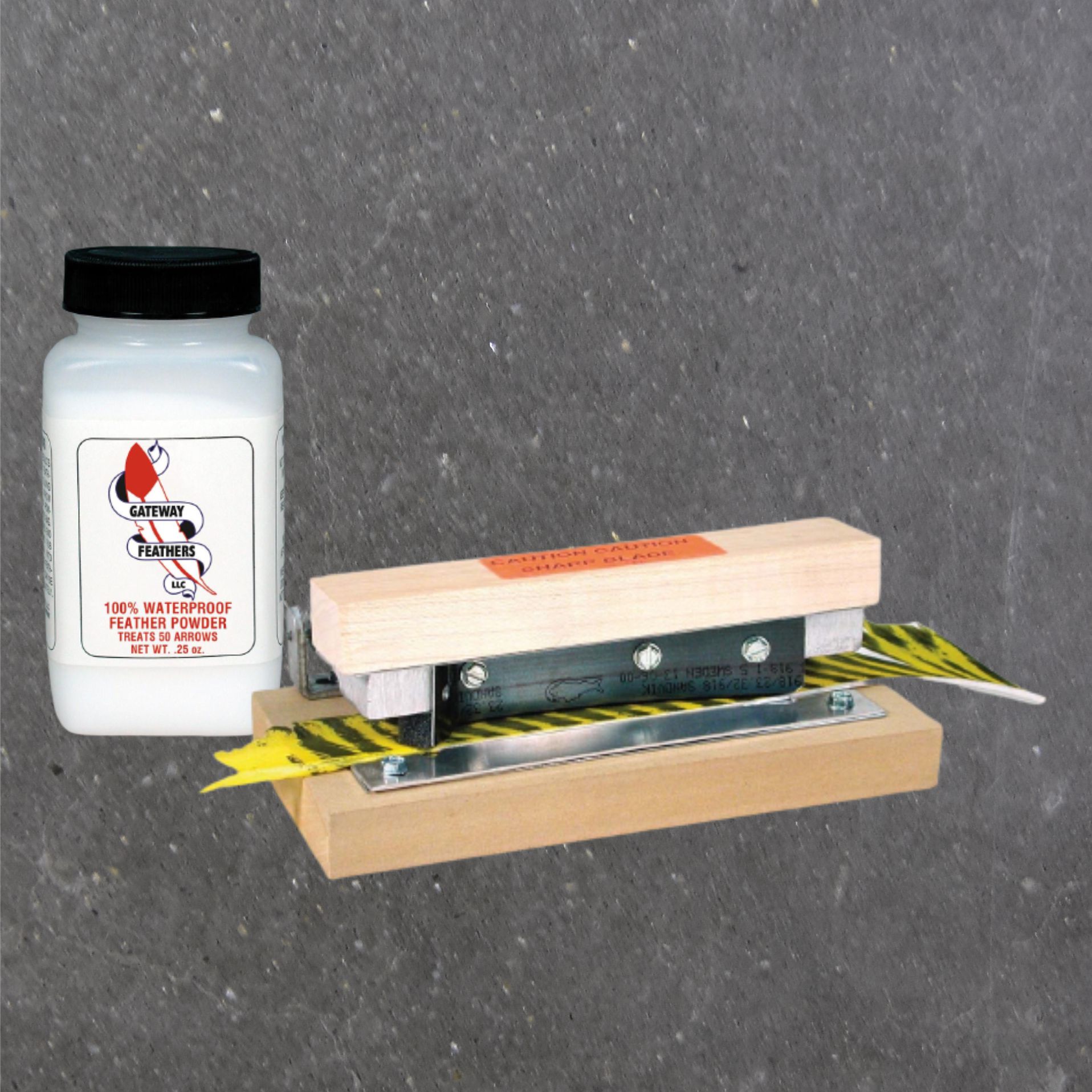
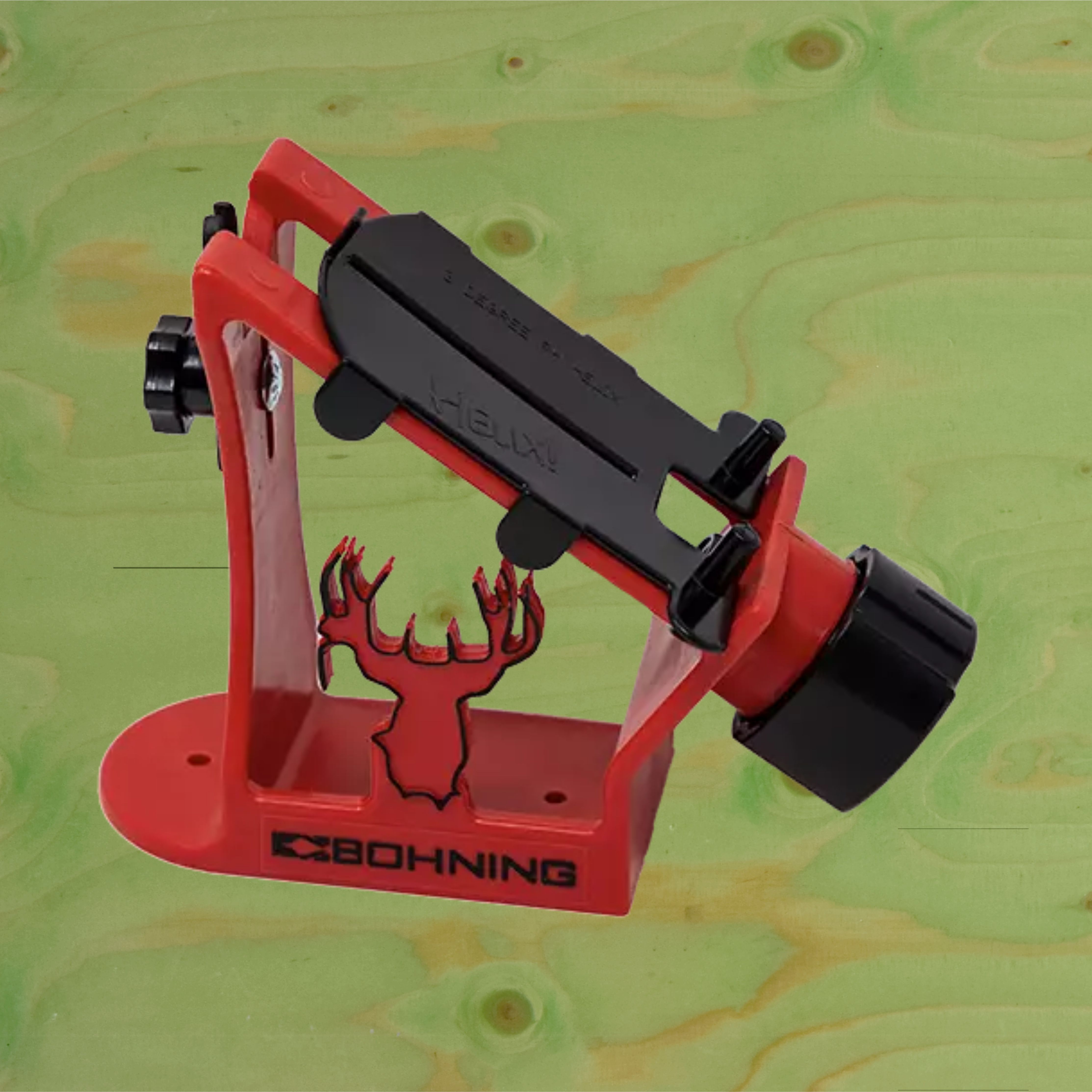
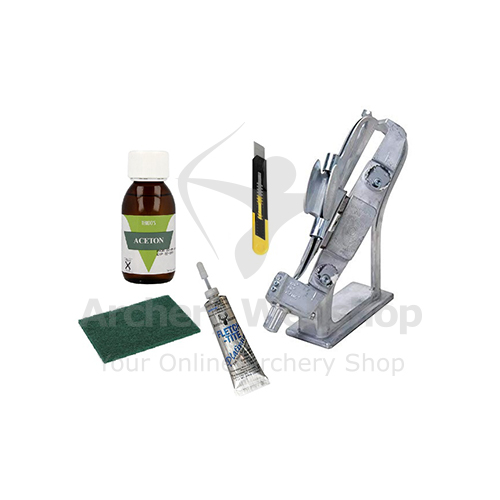
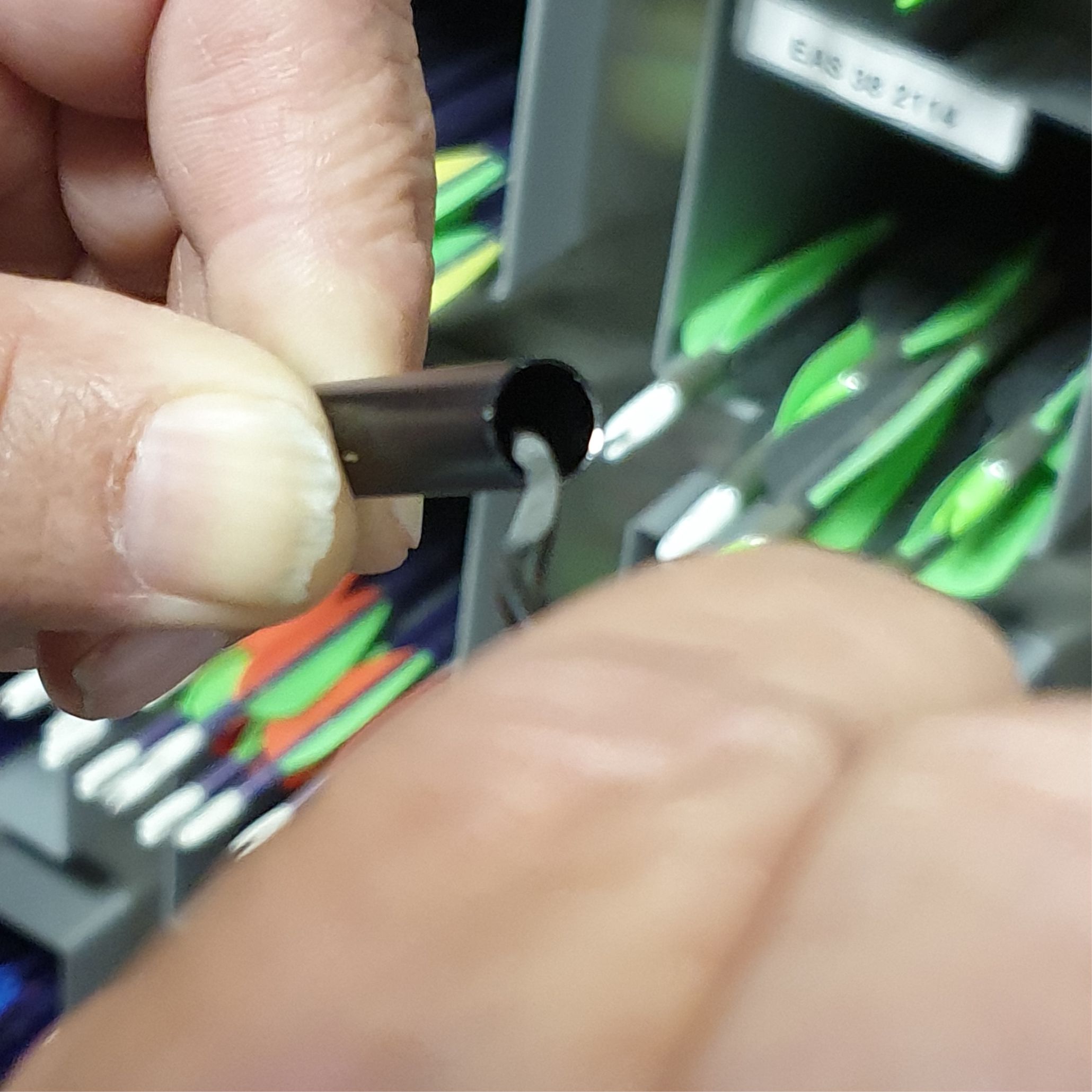









Dongs-Key Professional Fletching Set.
The Dongs-Key Professional Fletching Set is a perfect DIY toolkit for fletching vanes or feathers on the arrow shaft.
What is included in the set:
• Bitzenburger fletching Jig
• Small box cutter knife
• Sanding pad of Scouring pad
• Acetone – cleaning (flammable) solvent
• Glue - glue designed for fletching vanes & feather on aluminum, carbon, fiberglass & wood shafts
How to fletch an arrow:
1. Clean the shaft from old vanes/feathers, tape, wraps, glue, etc.
2. Clean the shaft with the Acetone.
3. Place the shaft in the fletching jig.
4. Clean the groove of the vane/feather.
5. Place the vane/feather in the fletching clamp.
6. Put a little glue on the vane/feather. (cover the complete surface of the groove, but do not overdo)
7. Place the clamp on the fletching jig against the shaft (applying slight pressure).
8. Let it rest for a few minutes, so the vane can attach.
9. Repeat the steps 4 to 8 for the 2nd and 3rd vane.
10. Remove the arrow from the fletching jig.
11. Put a small drop of glue at both ends of all the vanes/feathers.
Do not use the arrow for the next 24h (glue needs to bind).
(preferably store them separately, not in a tight quiver or arrow tube)
After 24h your new fletched arrows are good to go.
If you want to learn more about maintenance of your equipment, we kindly invite you to attend one of the workshops by Archery Learning Projects
Archery Tech Team
Learn Morehe Dongs-Key Starter set is an perfect kit to start fletching your own vanes ore feathers on the arrow shaft.
What is included
• Acetone
• Glue
• Fletching Jig
How to start fletching
Clean the shaft, old vanes/feathers, tape, wraps, etc.
Clean the shaft with Acetone ore alcohol
Put the shaft in the fletching Jig
Clean the vane/feather
Place the vane/feather in the clamp
Put a little glue on the vane/feather
Place the clamp on the fletching jig on the shaft
Let it rest for a few minutes
Repeat the steps 4 to 8 for 2 times
Take the arrow out the fletching jig
Put on the ends of the vanes/feathers a small drop glu
After 24 you can use the arrow
If you want to know more please follow one of our workshops from Archery Learning Projects
Archery Tech Team
Learn MoreBohning The Vane Stripper
About the product
Introducing the Bohning Strip-Pro, revamped in 2022 with an enhanced handle for improved grip and user convenience.
This tool is a must-have in your archery repair kit, effortlessly removing fletchings, adhesive residue, and wraps from your arrows. Engineered with a cutting angle that ensures safety for carbon, aluminum, and fiberglass shafts of all diameters, the Bohning Strip-Pro is versatile and reliable.
Its handle design incorporates a convenient feature - an opening for extra blade storage (extra blades not included), ensuring you're always prepared for maintenance tasks on the range or in the field.
Replacement blades are readily available (part #801026), offering continued functionality and longevity to your Strip-Pro.
Crafted with pride at the Bohning factory in Lake City, Michigan, this tool embodies the quality and precision associated with American manufacturing.
Archery Tech Team
Learn More